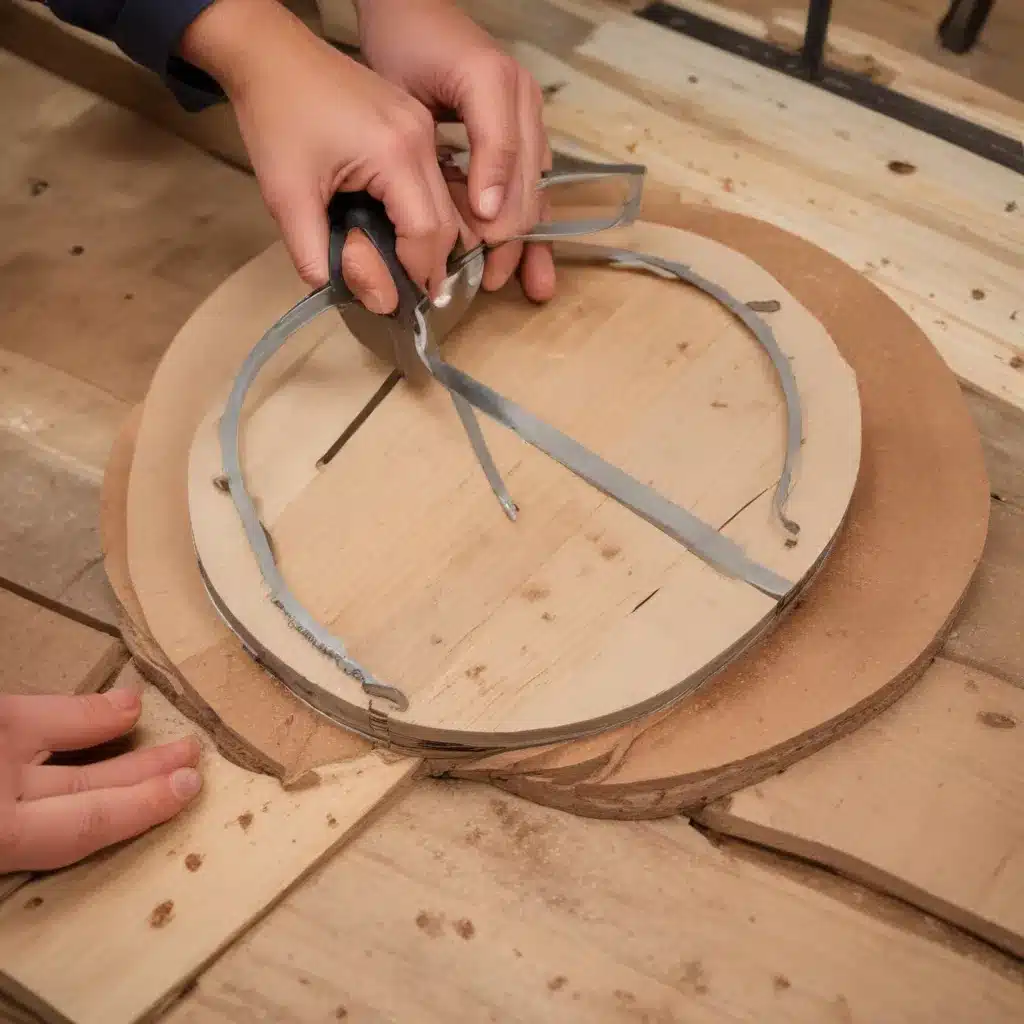
As an experienced woodworker and craftsman, I’ve encountered my fair share of challenges when it comes to selecting the perfect bandsaw blades for various projects. The bandsaw is a versatile tool that can handle a wide range of tasks, from intricate curves to precision ripping and resawing. However, choosing the right blade can make all the difference in achieving the desired results.
Understanding Bandsaw Blade Anatomy
Bandsaw blades come in a variety of configurations, and each one is designed to excel at specific types of cuts. Let’s start by exploring the key attributes that differentiate these blades:
Blade Width: Bandsaw blades are available in a range of widths, typically from 1/8″ to 3/4″. Narrower blades (1/8″ to 1/2″) are better suited for tight curves and intricate shapes, while wider blades (1/2″ to 3/4″) are more suitable for straight cuts, ripping, and resawing.
Blade Thickness: Blade thickness is another important factor, as it affects the stability and rigidity of the blade. Thinner blades (typically found on smaller bandsaws with 9″ to 12″ wheels) are more flexible and can handle tighter turns, while thicker blades (used on larger saws with 14″ or more wheels) provide more stability and power for heavier cuts.
Tooth Configuration: Bandsaw blades come in four primary tooth configurations: regular, skip, hook, and fleam. Regular teeth are the most versatile, skip teeth offer faster, more aggressive cuts, hook teeth excel at ripping, and fleam teeth produce the smoothest possible finish.
Teeth per Inch (TPI): The number of teeth per inch (TPI) also plays a crucial role. Higher TPI blades (such as 14 or 18 TPI) deliver a finer, smoother cut, while lower TPI blades (4 or 6 TPI) are better suited for fast, coarse cuts.
Matching Blades to Your Woodworking Needs
Now that we’ve covered the basic anatomy of bandsaw blades, let’s explore how to select the right ones for your specific woodworking needs.
Cutting Circles and Curves
If your primary focus is on creating circular or curved pieces, such as wall clocks or custom shapes, you’ll want to opt for a narrower blade, typically in the 1/4″ to 1/2″ range. These blades are more maneuverable and can handle tighter turns, allowing you to achieve precise, smooth cuts.
For these types of projects, I recommend a 1/4″ or 3/8″ blade with a higher TPI, such as 14 or 18 teeth per inch. The higher tooth count will give you a cleaner, more polished finish on your curved cuts. Additionally, a blade with a regular or skip tooth configuration will work well for these applications.
Ripping and Resawing
When it comes to ripping and resawing, you’ll want to use a wider blade, typically in the 1/2″ to 3/4″ range. These blades provide more stability and power, allowing you to make straight, accurate cuts through thicker materials.
For ripping and resawing, I suggest a 1/2″ or 3/4″ blade with a lower TPI, such as 4 or 6 teeth per inch. The larger gullets (the space between the teeth) on these blades will help evacuate wood chips more effectively, resulting in a faster and more efficient cut.
When selecting the tooth configuration, a hook tooth blade is an excellent choice for ripping and resawing, as it’s designed to excel at these tasks. Alternatively, a regular tooth blade can also work well for these applications.
Cutting Bowl Blanks
If you’re interested in creating bowls or other curved, hollow forms, you’ll need a blade that can handle the unique challenges of these projects. For cutting bowl blanks, I recommend a 1/2″ or 3/8″ blade with a regular or skip tooth configuration and a TPI between 6 and 10.
The narrower blade width will provide the necessary flexibility to navigate the curved surfaces of the bowl blank, while the tooth count and configuration will ensure a clean, smooth cut. Keep in mind that cutting bowl blanks can be more demanding on your bandsaw, so it’s essential to maintain proper blade tension and guide adjustments to achieve the best results.
Blade Maintenance and Longevity
Regardless of the specific blade you choose, proper maintenance is crucial to ensuring its longevity and optimal performance. Here are a few tips to keep your bandsaw blades in top condition:
Blade Cleaning: Regularly clean your bandsaw blades to remove any built-up resin, pitch, or debris. This can be done with a blade cleaning stick or a rag dampened with a mild solvent.
Blade Tension: Ensure that your bandsaw blades are properly tensioned. Overtensioning can lead to premature blade breakage, while undertensioning can cause the blade to wander and produce inaccurate cuts.
Blade Tracking: Properly adjust the blade tracking to ensure that the blade runs true and centered on the bandsaw’s wheels. This will not only improve the accuracy of your cuts but also extend the blade’s lifespan.
Blade Guides: Properly set the blade guides to provide the necessary support and stability for the blade. This will help prevent the blade from wandering or deflecting during the cut.
Blade Storage: When not in use, store your bandsaw blades in a dry, cool place to prevent rust and maintain their sharpness.
By understanding the key attributes of bandsaw blades and how to match them to your specific woodworking needs, you’ll be able to achieve consistently excellent results with your bandsaw projects. Remember, investing in the right blades and maintaining them properly can make all the difference in your woodworking journey.
If you’re interested in exploring more woodworking techniques, projects, and tool maintenance tips, be sure to visit our website at https://woodcraftparts.net/. Our comprehensive resources and expert insights can help you elevate your woodworking skills and create stunning, professional-grade projects.

